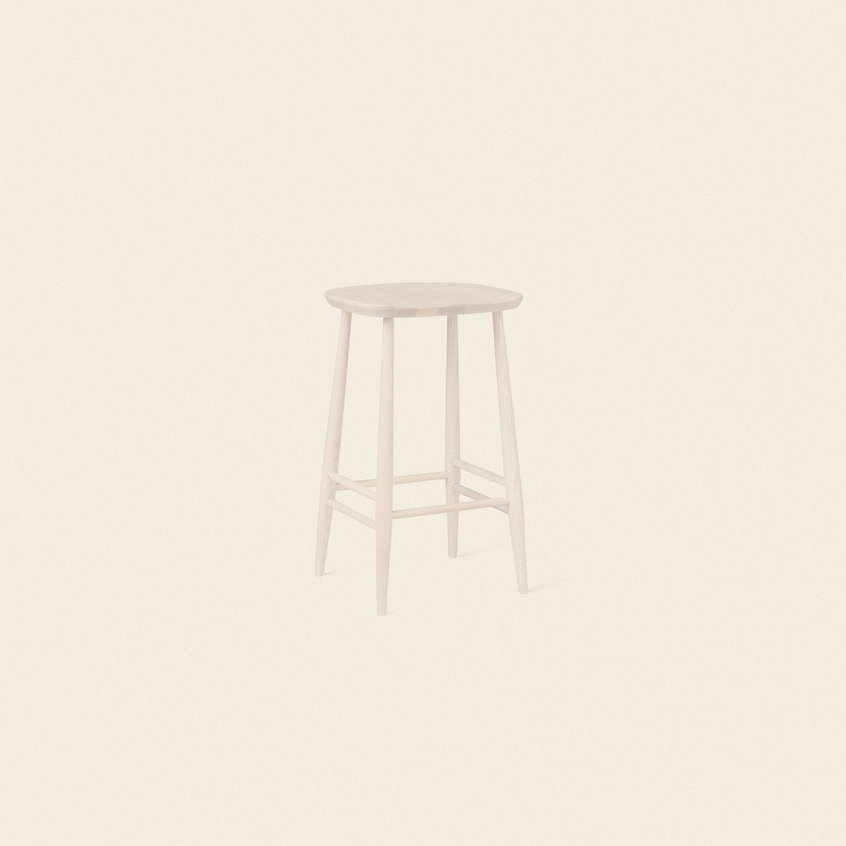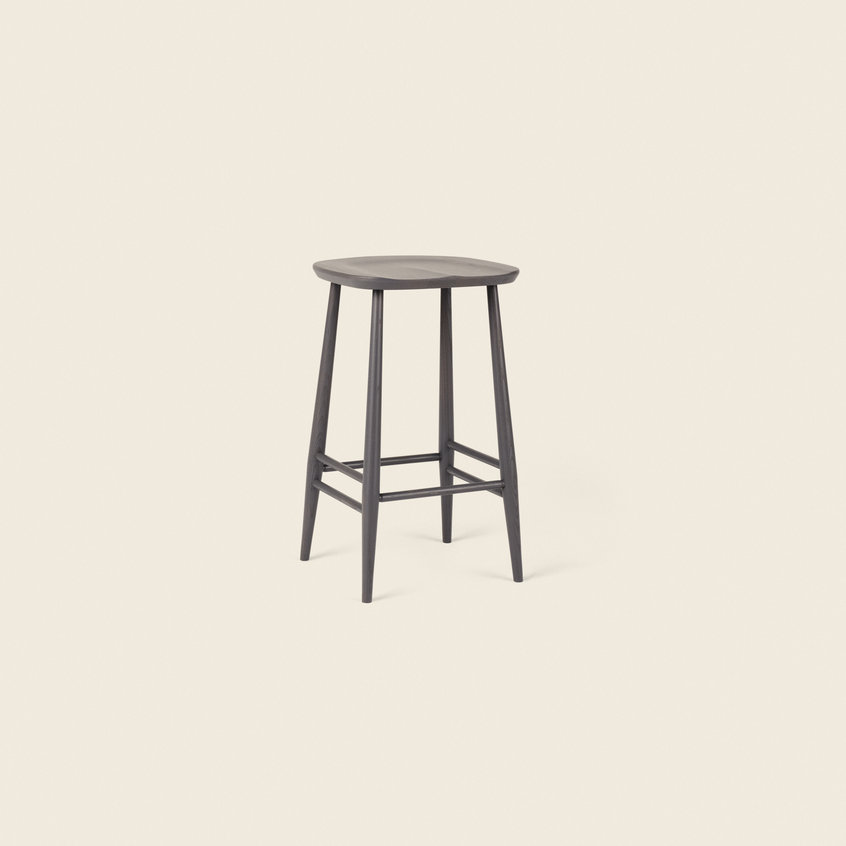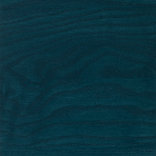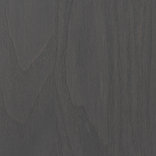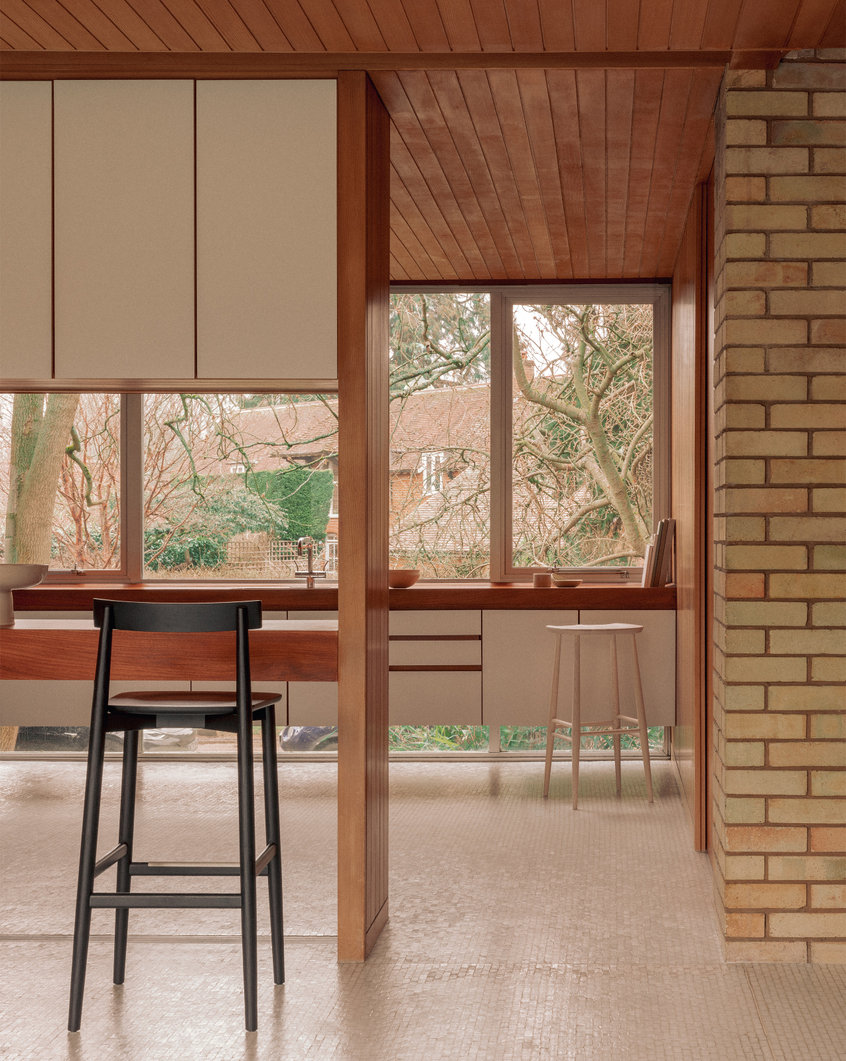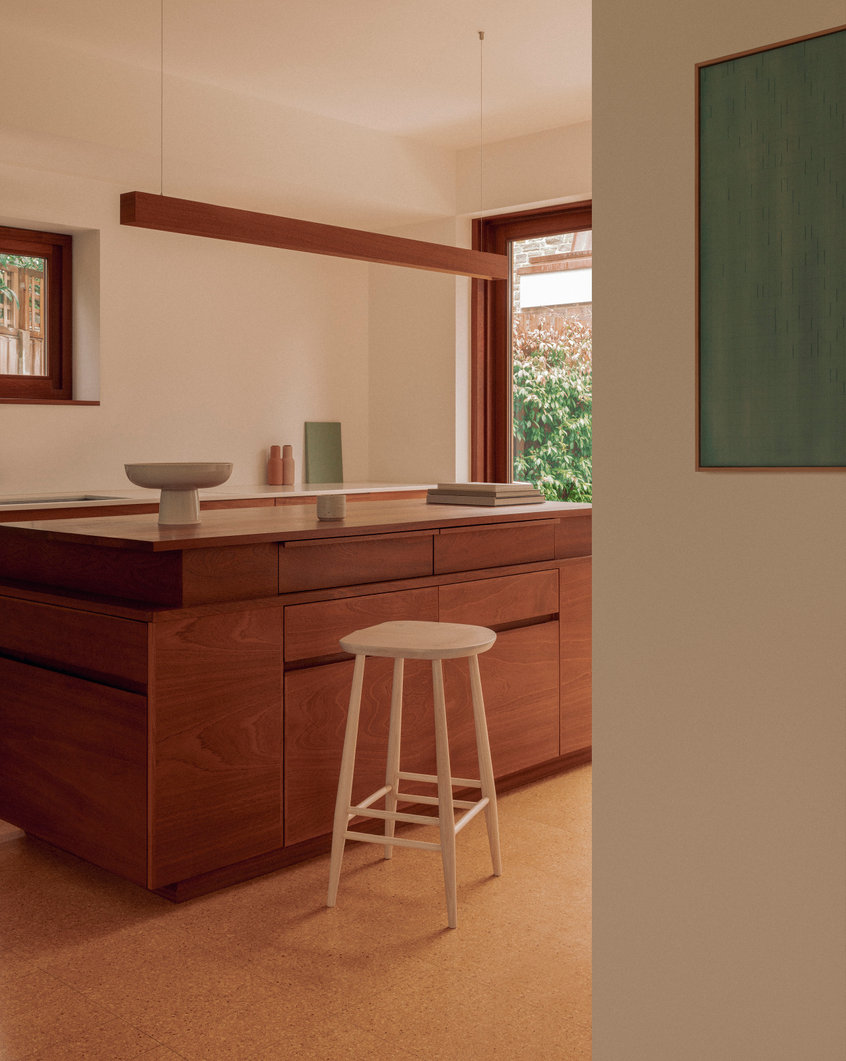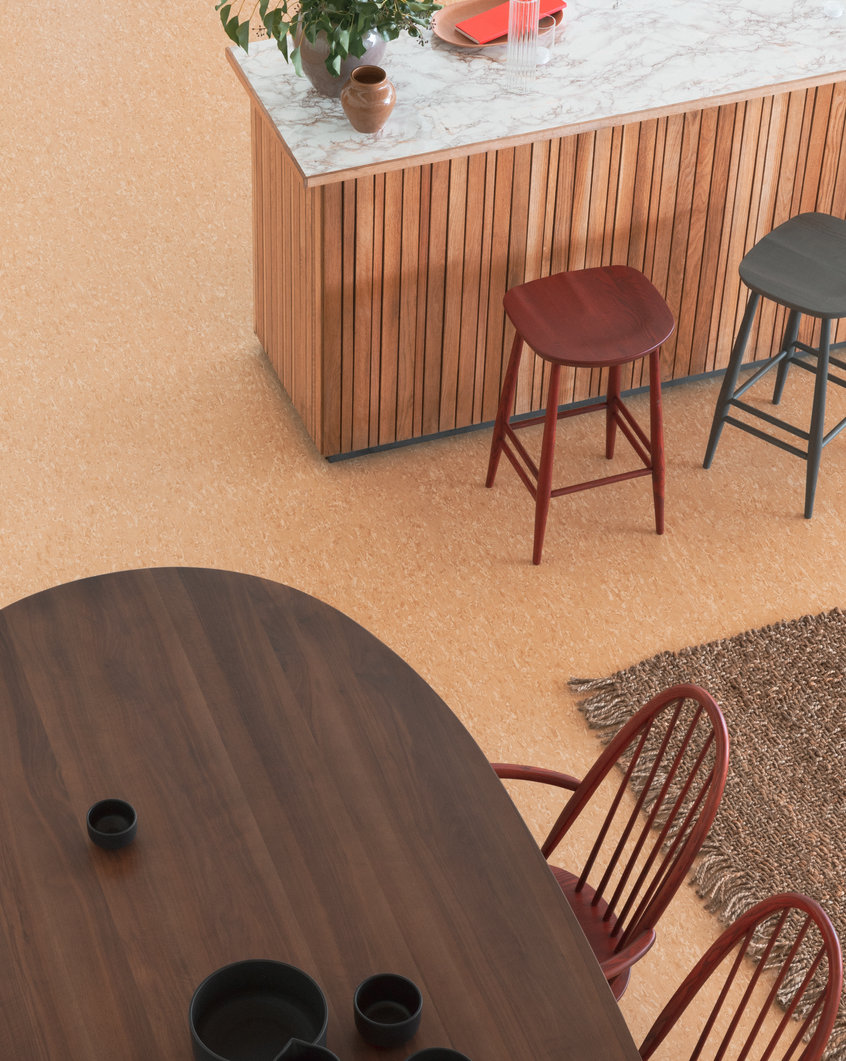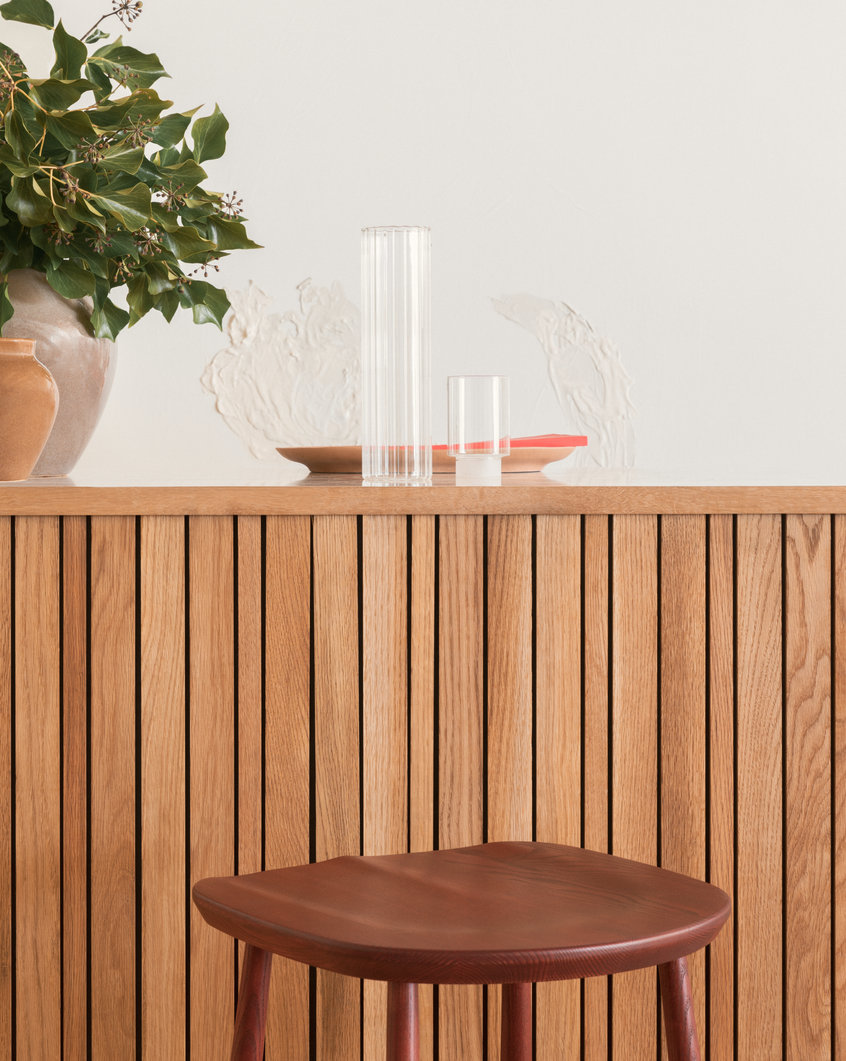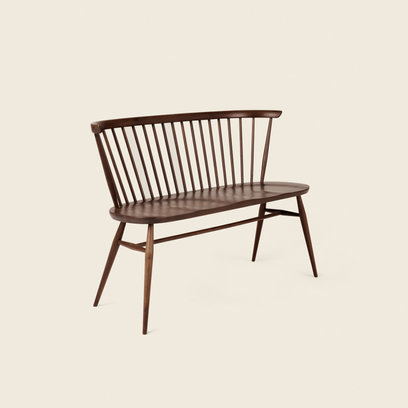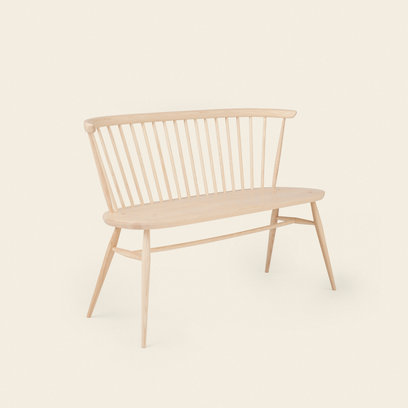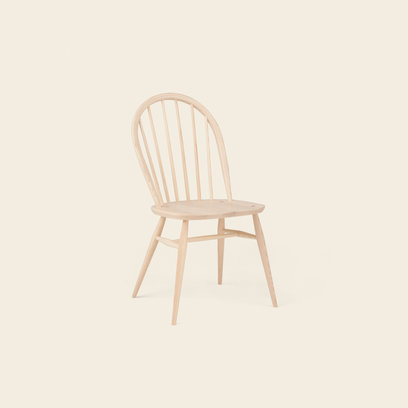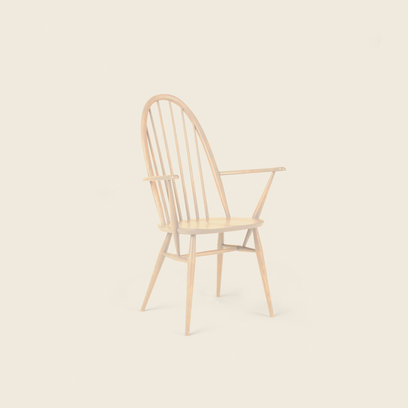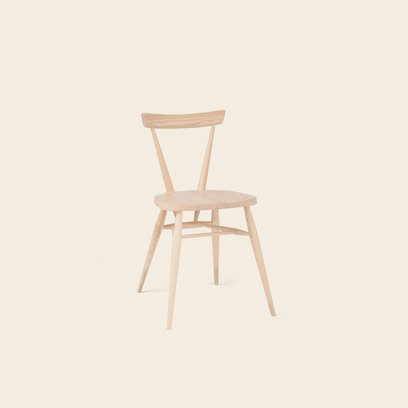Utility Counter Stool

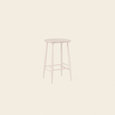




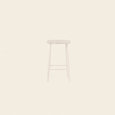
Designed by Lucian Ercolani, 1956
The UTILITY COUNTER STOOL (1956) was originally custom-built as seating for L.Ercolani’s team of designers when sketching in the factory. Today, some seventy years later, the stool remains a favourite of creators everywhere.
A classic characteristic of traditional Windsor craftsmanship, the UTILITY COUNTER STOOL features tapered, outward-facing legs and a moulded ash seat that accentuates the stool’s agile build. Additionally, the UTILITY COUNTER STOOL boasts the iconic Windsor joint — a trademark detail found in many of Lucian Ercolani’s early works.
Manufactured in solid ash, the UTILITY COUNTER STOOL is offered in nine bespoke finishes, including a soothing natural finish and the new, bold MODERN TONES series by Christian Møller Andersen.
Product Description
The philosophy behind Lucian Ercolani’s early designs is simple — enduring, timeless design, constructed using humble, straightforward materials and hand-built to last for generations. With these values in mind, Lucian Ercolani created the iconic UTILITY COUNTER STOOL in 1945, marking a new and defining chapter in British design history.
The UTILITY COUNTER STOOL was originally custom-built as seating for L.Ercolani’s team of designers when sketching in the factory. Today, some seventy years later, the stool remains a favourite of creators everywhere — championed by designers, architects and culinary creatives alike. Ergonomic and subtle, the UTILITY COUNTER STOOL’s sleek, minimal profile effortlessly lends itself to any number of casual and professional environments — from domestic kitchens to corporate workspaces and beyond.
A classic characteristic of traditional Windsor craftsmanship, the UTILITY COUNTER STOOL features tapered, outward-facing legs and a moulded ash seat that accentuates the stool’s agile build. Additionally, the UTILITY COUNTER STOOL boasts the iconic Windsor joint — a trademark detail found in many of Lucian Ercolani’s early works. In this classic technique, the stool’s legs are extended through the seat and secured with a wedge. These joints are then sanded until they lie flush with the seat to create an incredibly durable, reinforced base, built to withstand the wear and tear of everyday use.
Manufactured in solid ash, the UTILITY COUNTER STOOL is offered in nine bespoke finishes, including a soothing natural finish and the new, bold MODERN TONES series by Christian Møller Andersen.
Specifications
Product Code
4666
Country of Origin
UK
Product Dimensions
Width: 39cm
Depth: 37cm
Height: 65cm
Seat Height: 65cm
Seat Depth: 37cm
Seat Width (Arm to Arm): 39cm
Product Weight
4kg
Assembly
Fully Assembled
Packaged Dimensions
68cm (L) x 44cm (W) x 44cm (H). 6kg

